You can listen to Hoosier History Live! live on the air each Saturday, or listen online at the WICR website during the broadcast on any computer with speakers, anywhere, or on a smartphone. We invite you to visit our website!
Oct. 15 show
Street names history in Indy
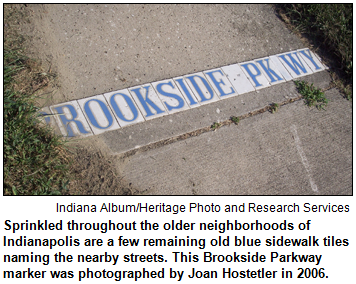 Amid the controversy surrounding the proposals to rename Georgia Street in downtown Indianapolis, have you been wondering how streets across the city got their names? And why some have been changed over the years?
Amid the controversy surrounding the proposals to rename Georgia Street in downtown Indianapolis, have you been wondering how streets across the city got their names? And why some have been changed over the years?
Hoosier History Live! will explore the heritage of street names with local historian Joan Hostetler, who initiated the crusade to keep the 190-year-old name on Georgia Street with a campaign that began on Facebook.
Joan and Nelson also will be joined by Steve Campbell, a former Indy deputy mayor who has been working on a book about street names.
Some were changed because of landmarks such as the Indiana Statehouse. Its construction resulted in Tennessee Street being renamed Capitol Avenue in the 1890s.
Other street names were changed because of anti-German sentiment after World War I. On the west side of town, for example, Bismarck Avenue became Pershing Avenue.
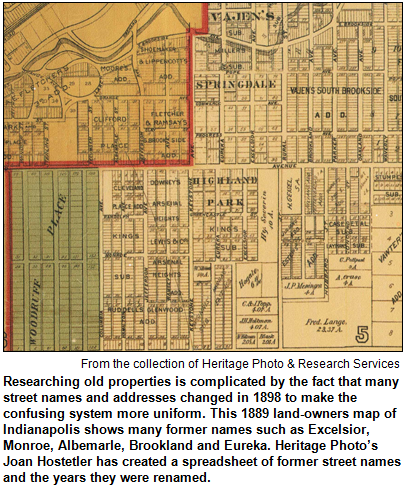 As the city began numbering thoroughfares at 9th Street, other names changed. Did you know East 10th Street once was known as Clifford Avenue?
As the city began numbering thoroughfares at 9th Street, other names changed. Did you know East 10th Street once was known as Clifford Avenue?
To get around state legislation prohibiting taverns on alleys, the Indianapolis City Council changed alleys to streets in the downtown area. This also affected street names, according to Joan, co-owner of Heritage Photo & Research Services. She specializes in local history research and preserving, digitizing and archiving historic photographs.
Curiosity about the city's heritage of naming streets has been intensified by the debates about renaming three blocks of Georgia Street, which is undergoing a $12 million transformation into a covered, pedestrian-friendly mall in time for the Big Ten Football Championship on Dec. 3 and the Super Bowl on Feb. 5.
Initial suggestions to rename the three blocks "Hospitality Boulevard" or "Championship Way" (the stretch of Georgia Street connects the Indiana Convention Center with Conseco Fieldhouse) drew objections from the public.
With subsequent revelations that pillars along the reconfigured thoroughfare will honor famous Hoosiers, one letter-writer to The Indianapolis Star suggested tweaking the street name to "Georgia on My Mind Street."  That was a nod to composer Hoagy Carmichael, a Bloomington native whose hits included "Georgia on My Mind."
That was a nod to composer Hoagy Carmichael, a Bloomington native whose hits included "Georgia on My Mind."
The name Georgia Street dates to 1821. That's when city planner Alexander Ralston created the original plat for Indianapolis. He named 22 streets for states. Think of Pennsylvania Street, Ohio Street and Massachusetts Avenue. Or of Delaware Street, Virginia Avenue and Illinois Street.
As the city grew, streets were named for various reasons, including as a way to honor people. They also were renamed for various reasons.
According to Joan, an African-American city councilman in the 1890s pushed to change the name of Mississippi Street. It was renamed Senate Avenue in 1895.
An example of a renaming in more recent times: A stretch of Fall Creek Boulevard on the northeastside was renamed Binford Boulevard to honor civic leader Tom Binford (1924-1999).
In addition to the Bismarck-to-Pershing switch because of anti-German sentiment, Joan notes another westside street also was affected. Belleview Place once was called Germania.
 Intrigued? Tune in for more insights and historical tidbits from Steve Campbell, who was deputy mayor from 2005 to 2007 during the Bart Peterson administration, and Joan, who collaborated with Nelson and photographer Garry Chilluffo on the Indianapolis Then and Now visual history book.
Intrigued? Tune in for more insights and historical tidbits from Steve Campbell, who was deputy mayor from 2005 to 2007 during the Bart Peterson administration, and Joan, who collaborated with Nelson and photographer Garry Chilluffo on the Indianapolis Then and Now visual history book.
According to Steve, the street naming process in Indy can be divided into two distinct categories: Names in the "old city" (pre-Unigov city limits) and names in suburban neighborhoods that were developed later.
"The old city naming process was pretty standard and orderly," he says. "The townships developed a little bit by common lore and local usage. I haven't found the answers to every street name, but I'm probably at about 80 to 90 percent."
A history lover, Steve has served on the boards of many civic and historical organizations, including the Benjamin Harrison Presidential Site and the Marion County Historical Society. He's the founder of Campbell Strategies, an Indy-based consulting firm.
At Heritage Photo & Research Services, Joan has worked with clients including the Indianapolis Museum of Art and the Indiana Historical Society, where she formerly was a photo archivist and exhibits coordinator.
Roadtripper report: What to expect on Georgia Street!
As our Roadtripper's day job is that of being the vice president of marketing and communications for the ICVA, and as he's also on the Super Bowl Host Committee, and as he has a bird's-eye view of what's going on downtown, we thought we'd take the opportunity to have Chris Gahl report on what we can expect the new pedestrian mall downtown to look like! Thanks, Chris.
History Mystery
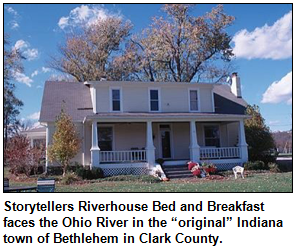 Streets aren't the only places on Indiana maps that have undergone name changes. When a city in central Indiana was laid out as a small village in the 1830s, it was called Bethlehem. The initial plat for Bethlehem in 1837 consisted of 14 lots. When a post office was established in the village in 1846, residents were notified by the U.S. Post Office that another town in Indiana (in the far southern part of the state) already had been named Bethlehem.
Streets aren't the only places on Indiana maps that have undergone name changes. When a city in central Indiana was laid out as a small village in the 1830s, it was called Bethlehem. The initial plat for Bethlehem in 1837 consisted of 14 lots. When a post office was established in the village in 1846, residents were notified by the U.S. Post Office that another town in Indiana (in the far southern part of the state) already had been named Bethlehem.
As a result, the village in central Indiana - now a thriving city - took a new name.
Question: Name the city.
To win the prize, you must call in with the correct answer during the live show. Please do not call if you have won a prize from any WICR show during the last two months. The call-in number is (317) 788-3314, and please do not call until you hear Nelson pose the question on the air.
The prize is a gift certificate to dine at Seasons 52 Fresh Grill at Keystone at the Crossing in Indianapolis, courtesy of the ICVA.
Your Hoosier History Live! team,
Nelson Price, host and creative director
Molly Head, producer, (317) 927-9101
Chris Gahl, Roadtripper
Richard Sullivan, webmaster and tech director
Pam Fraizer, graphic designer
Garry Chilluffo, creative consultant
Michele Goodrich, Jed Duvall, grant consultants
www.hoosierhistorylive.org


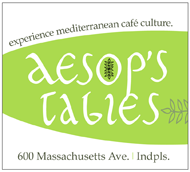

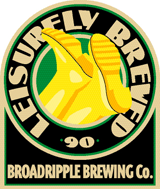

Please tell our sponsors that you appreciate their support: Aesop's Tables, Broad Ripple Brewpub, Indiana Historical Society, Lucas Oil, Sexton Companies and Story Inn.
 Acknowledgments to Print Resources, Indianapolis Marion County Public Library, Monomedia, Indiana Humanities, Indianapolis Convention & Visitors Association, WICR-FM, Fraizer Designs, Heritage Photo and Research Services, Derrick Lowhorn, Samantha Stratton and many other individuals and organizations. We are an independently produced program and are self-supporting through organizational sponsorships, grants and through individual tax-deductible contributions through the Indiana Humanities Council. Visit our website to learn how you can support us financially.
Acknowledgments to Print Resources, Indianapolis Marion County Public Library, Monomedia, Indiana Humanities, Indianapolis Convention & Visitors Association, WICR-FM, Fraizer Designs, Heritage Photo and Research Services, Derrick Lowhorn, Samantha Stratton and many other individuals and organizations. We are an independently produced program and are self-supporting through organizational sponsorships, grants and through individual tax-deductible contributions through the Indiana Humanities Council. Visit our website to learn how you can support us financially.
Oct. 22 show
Covered bridges across Indiana
Our state was a land of wooden, covered bridges from 1820 to 1922. That's when more than 600 covered bridges were built across Indiana. Today, about 90 of these historic gems remain. To explore them, Nelson will be joined in studio by Margaret Smith of Indianapolis, past president of the Indiana Covered Bridge Society, and Larry Stout of Rush County, who helped spearhead the restoration of the historic Moscow Covered Bridge, which had been demolished by a tornado.
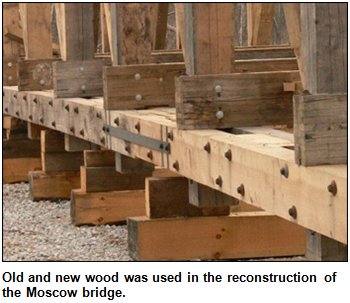 Some fun facts, courtesy of Margaret: The Medora Covered Bridge in Jackson County is, at 434 feet, the longest covered bridge in the nation. The Edna Collins Covered Bridge - which was the last covered bridge built in the state - is said to be haunted. And the Ramp Covered Bridge at the north entrance to Brown County State Park is the only two-lane covered bridge in Indiana.
Some fun facts, courtesy of Margaret: The Medora Covered Bridge in Jackson County is, at 434 feet, the longest covered bridge in the nation. The Edna Collins Covered Bridge - which was the last covered bridge built in the state - is said to be haunted. And the Ramp Covered Bridge at the north entrance to Brown County State Park is the only two-lane covered bridge in Indiana.
The heyday of covered-bridge construction was the 1880s; bridges were covered to protect their flooring and interior from the elements.
A tornado that roared through Rush County in 2008 threw the Moscow bridge (built in 1886) into the Flatrock River, but it has been reconstructed using 30 percent of the original wood.
Indiana Landmarks recently honored our guest Larry Stout, president of Rush County Heritage and a resident of the village of Gowdy, with the Servaas Award for lifetime achievement. His preservation efforts extend far beyond covered bridges, but his county - as well as Parke County - is particularly known for them. The Parke County Covered Bridge Festival runs from Friday (Oct. 14) to Oct. 22.
Another fun fact: Of about two dozen covered bridges once in Hamilton County, the only original that remains is Potter's Ford Covered Bridge on the west fork of the White River, two miles north of Noblesville. According to Margaret, its restoration is "one of the true success stories of covered bridge preservation." She says Potter's Ford even has a sprinkler system to prevent arson and a coating of special paint to resist graffiti, which has plagued other covered bridges.
© 2011 Hoosier History Live! All rights reserved.